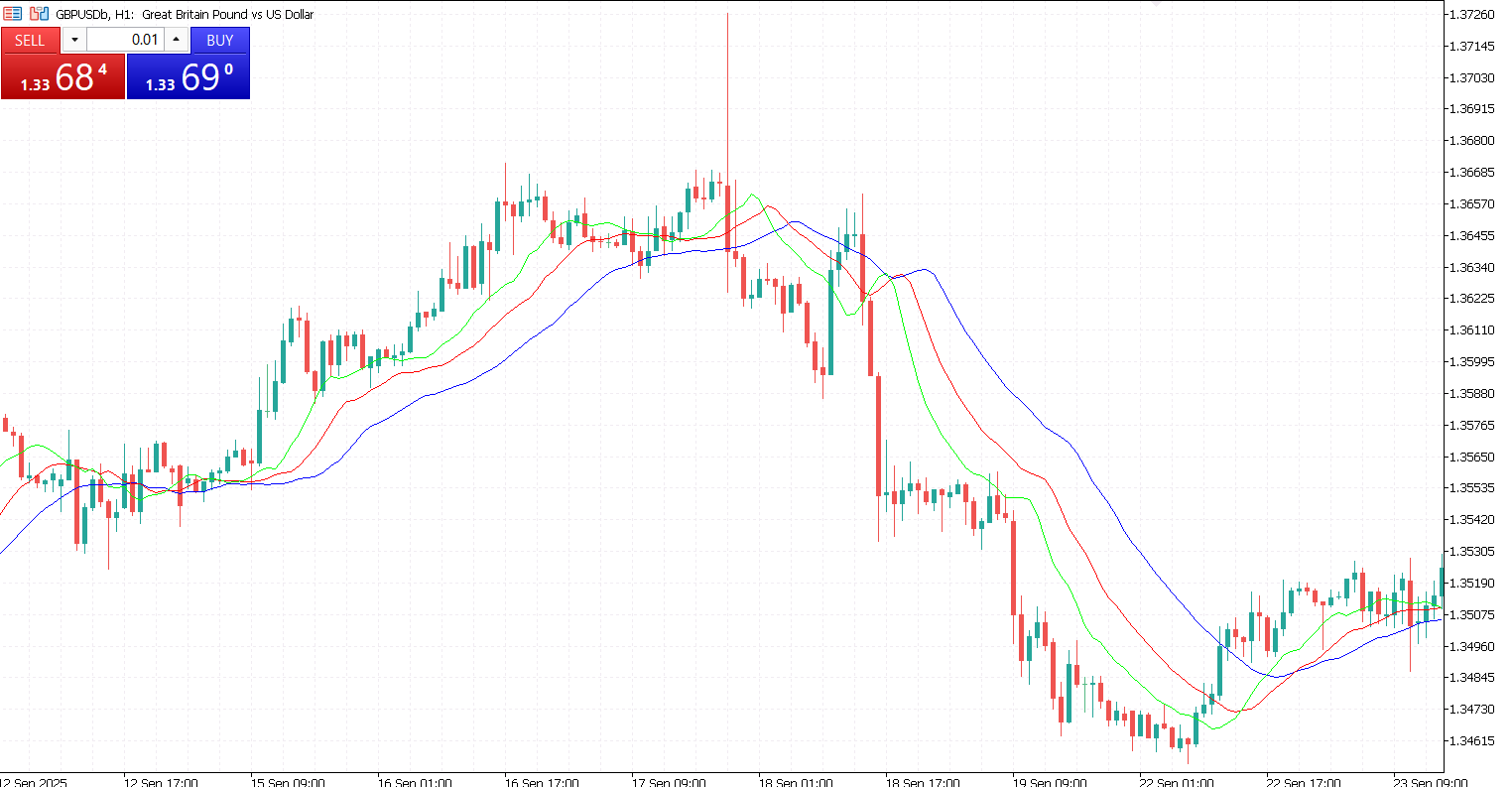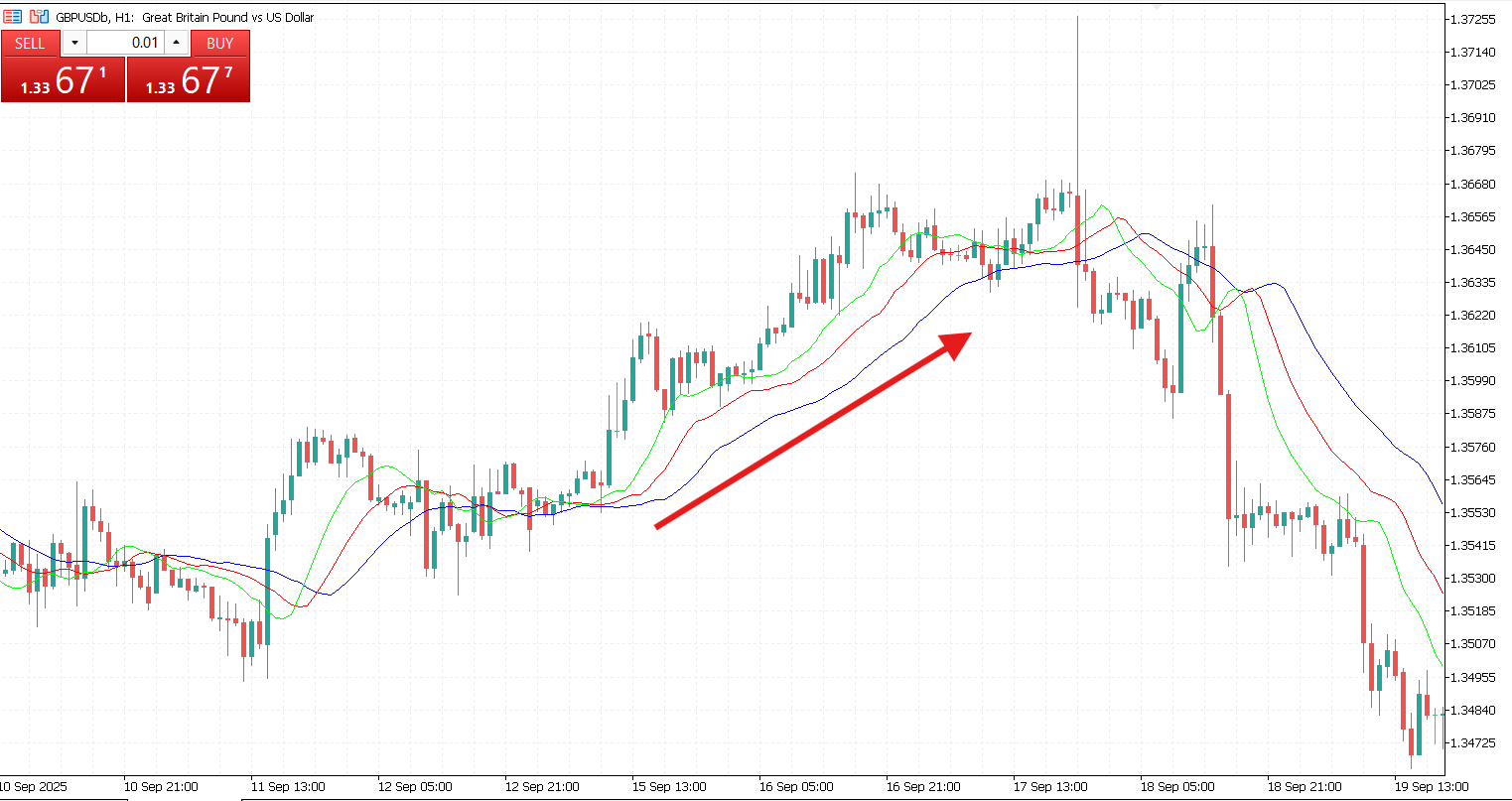The Alligator is particularly popular among Forex, commodity, and stock traders due to its ability to highlight trend strength and direction. By focusing on price alignment and the interplay of its three lines, traders can discern whether the market is trending, consolidating, or preparing for a breakout. This article explores the Alligator Indicator in depth, from its components and interpretations to strategies, advantages, limitations, and practical tips for incorporating it into a trading plan.
Understanding the Williams Alligator Indicator
The Williams Alligator Indicator consists of three smoothed moving averages, referred to as the jaw, teeth, and lips:
- Jaw (Blue Line). A 13-period smoothed moving average shifted forward by 8 bars. It represents the long-term trend and gives a broad view of market direction.
- Teeth (Red Line). An 8-period smoothed moving average shifted forward by 5 bars. This line provides a medium-term perspective, bridging the gap between short-term price movements and long-term trends.
- Lips (Green Line). A 5-period smoothed moving average shifted forward by 3 bars. This is the fastest-moving line and reacts quickly to price changes, signaling early trend shifts.
The visual metaphor of the Alligator, sleeping, waking, and feeding, is central to understanding its use:
- Sleeping Alligator. When the three lines are intertwined and moving sideways, the market is in a consolidation phase. Traders are advised to wait for a breakout before taking action, as signals are likely to be unreliable.
- Awakening Alligator. When the lines begin to separate, it signals the early stages of a trend. This is when the Alligator “wakes up” and starts feeding. The first separation often indicates the initial momentum in the market, giving traders a chance to position themselves ahead of the full trend.
- Feeding Alligator. When the lines are clearly spread apart and moving in the same direction, the trend is strong, and the market is “feeding.” Traders can follow the trend, riding momentum until the lines begin to converge again.
How to Interpret the Alligator Indicator
The Alligator is most effective when combined with price action analysis. Key interpretations include:
- Trend identification. If the green line (lips) is above the red line (teeth), and the red is above the blue (jaw), the market is in an uptrend. The reverse alignment indicates a downtrend.
- Trend strength. The distance between the lines indicates momentum. Wide separation suggests strong trending conditions, while narrow gaps signal weakening trends or consolidation.
- Entry signals. Traders often enter positions when the Alligator “awakens” from its sleep, when the lines begin to diverge after a period of consolidation.
- Exit signals. Positions can be closed when the lines start converging again, indicating the Alligator is going back to sleep and a trend may be ending.
Unlike oscillators like RSI or MACD, the Alligator does not provide overbought or oversold signals. Instead, it is purely a trend-following tool, making it most effective in trending markets rather than choppy, sideways conditions.

Combining the Alligator with Other Indicators
The Alligator indicator can be used independently, but many traders enhance its effectiveness by combining it with other techniques. Bill Williams recommended pairing it with fractals, which mark local highs and lows and help refine entries and exits when they align with the Alligator’s trend signals.
Oscillators such as RSI or Stochastic provide additional confirmation by highlighting momentum extremes or potential reversals, reducing the risk of chasing trends blindly. Volume analysis can also strengthen decision-making, since heavy trading activity during an Alligator awakening phase suggests a breakout is more likely to develop into a sustainable move.

Strategies for Using the Alligator
In practical trading, the Alligator supports several strategic approaches. One is trend following, where traders look to enter positions in the direction of the lines when they are aligned and pointing clearly upward or downward.
Another is breakout trading, which focuses on identifying consolidation periods before entering trades as the lines spread apart and price moves with the trend. A third is pullback entries, where retracements toward the Alligator lines are used as opportunities to join an existing trend at a more favorable level rather than chasing momentum.
Importance of Risk Management
Although powerful, the Alligator can sometimes deliver delayed signals, especially during sudden reversals or highly volatile markets. This makes risk management essential. Stop-loss orders and proper position sizing help protect against sharp market swings, ensuring that traders can take advantage of the Alligator’s strengths while limiting potential losses.

Advantages and Limitations
Advantages:
- Simple and visual, easy for beginners to understand.
- Effective in identifying trends and momentum shifts.
- Can be combined with fractals, oscillators, and volume analysis for higher probability trades.
Limitations:
- Less effective in ranging or choppy markets, where false signals can occur.
- Lagging nature due to moving averages; entries may come slightly late.
- Requires additional confirmation tools to minimize risk.

The Williams Alligator indicator is a versatile and visually intuitive tool for traders seeking to identify trends and market phases. By understanding when the Alligator is sleeping, awakening, or feeding, traders can position themselves strategically to follow momentum, spot breakout opportunities, and manage risk effectively. While no indicator guarantees success, the Alligator’s simplicity, combined with its unique approach to market dynamics, makes it a valuable addition to any technical trader’s toolkit.
Whether you are trading Forex, stocks, or commodities, mastering the Williams Alligator indicator can enhance your ability to read market rhythms, anticipate trend changes, and make more informed trading decisions. Like any trading tool, it works best when integrated into a comprehensive strategy, supported by proper risk management and market analysis. In essence, understanding the Alligator’s “hunger” and timing your trades accordingly may well improve your trading performance and help you navigate the complex waters of financial markets with greater confidence.







